In our society, innovation and creativity are more important than ever. One challenge in today's creative development process is that you have to develop closer to the customer than ever before and adapt quickly to changing market needs. One framework has proved particularly effective in recent years for developing innovative products: Design Thinking.
Addressing problems from different perspectives should contribute to the development of new ideas. A user-centered approach to the innovation process is particularly important here.
We found four questions in wibas with regard to Design Thinking particularly interesting:
- Design thinking and agility - do they go together and if so, how?
- The transition from Design Thinking to Scrum
- What does the ideal design thinking team look like?
- Design thinking and creativity
To get to the bottom of these questions, 27 participants came together on August 1 for the "Agile Rhine-Main" user group in order to Design Thinking and discuss them in a guided, open format.
The findings on these questions are broken down again below for anyone who was unable to attend the evening or would like to read them again.
In order to answer these questions, the participants were asked to divide into four small groups according to their preferred question. Based on a semi-structured guideline, each group developed its own findings on the question. All participants then gathered to pool the information in plenary and discuss their most central question with the other participants in a fishbowl.
1. design thinking and agility
What do you think connects design thinking and agility?
- Design thinking and agility are based on an iterative, cyclical process. This starts with ideation, continues with prototyping, testing and revising and ends with newly identified problems. From here, the cycle starts all over again.
- In both agile working and design thinking, the focus is on the customer.
- An important component of this is obtaining information and feedback at an early stage.
Do these aspects contradict each other?
- Design thinking is mainly used at the beginning of a project to generate ideas. A design sprint is not repeated at regular intervals, but is carried out as required.
- Agility in itself is not operational.
- The agile manifesto exemplifies certain principles. It provides certain impulses or guidelines for agile collaboration. The agile manifesto is correlative.
Learnings:
- Agility in itself is not operational.
- Design thinking and agility are user-centered.
- Design thinking and agility are based on a common mindset.
Discussion topics:
- What use cases of design thinking and agility do you know?
- Why aren't there more sections on design thinking and agility? Why isn't it used more often?
2. the transition from Design Thinking to Scrum
How do you imagine the transition from Design Thinking to Scrum?
- Design thinking is used to develop a prototype, product vision and verified assumptions. This output is tipped into the Scrum team during a handover.
Is it also possible the other way around?
- A Design Sprint does not always have to be at the beginning of a Scrum cycle. Scrum can also transition into Design Thinking. This can occur in the sprint for implementation backlog items or discovery backlog items, for example.
Learnings:
- There should be one or two people on both the Design Thinking and Scrum teams.
- Learnings that are found during design thinking are more important than prototypes, visions and click dummies.
- You should think big at first, as ideas tend to break down over time.
Discussion topic:
- What experience do you have with Design Thinking within a Scrum process?
3. design thinking and creativity
How do design thinking and creativity go together?
- In the ideation phase, creativity is the key to generating a good product
- Many design thinking techniques are designed to maximize the creative discovery process
- The process of a design thinking sprint with its converging and diverging phases also arose from the same motivation.
How could creativity be encouraged in the design thinking process?
- Openness on the part of the participants and the existence of a closed, safe space offer optimal conditions for giving free rein to creativity.
Learnings:
- Personnel techniques
- Crazy 8
Discussion topic:
- What techniques do you know?
- What is the difference between individual and team creativity?
4. what does the ideal design thinking team look like?
What should I bear in mind when setting up a design thinking team?
- Team members should be able to communicate openly with each other.
- The team should be willing to experiment and not be discouraged by unsuccessful attempts.
- People with different backgrounds can bring together different perspectives in a heterogeneous and multidisciplinary team.
- A small team size (two-person teams) is an advantage in order to achieve a productive, creative working atmosphere.
On the latter topic, there was a short excerpt from a research paper on how to build design thinking teams in the best possible way. The following flipchart refers, among other things, to the "Big Five", a model from personality psychology. The factors in this model include openness to experience, conscientiousness, extraversion, agreeableness and neuroticism.
Conclusion
In summary, we came a good deal closer to finding answers to all the questions this evening. However, just as many new, unresolved situations and questions arose during this process, so there is no question that another evening will be held to get to the bottom of these.
If this has made you curious and you are interested in delving deeper into specific questions, we look forward to welcoming you to the next Agile Rhein-Main User Group. The focus here will be on a case study on the topic of design thinking. The next event will start at 18:30 at wibas. You will soon find more information on meetup.
We look forward to seeing you!

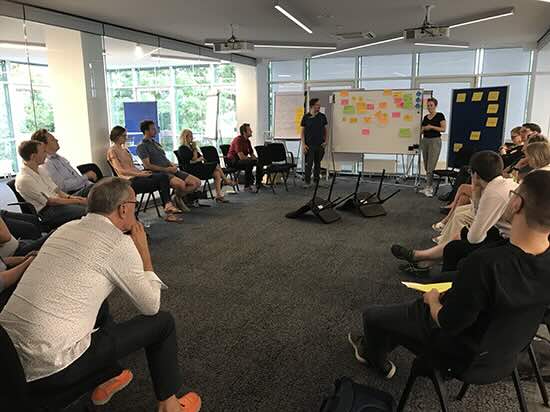
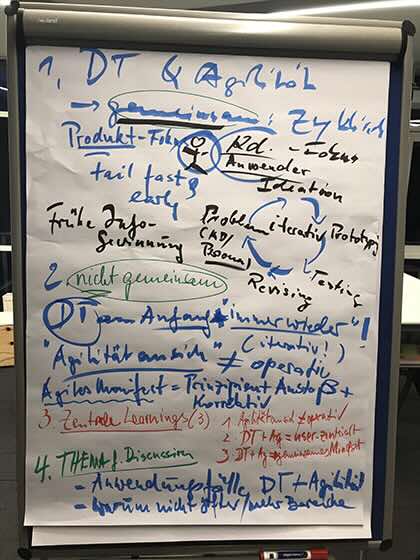
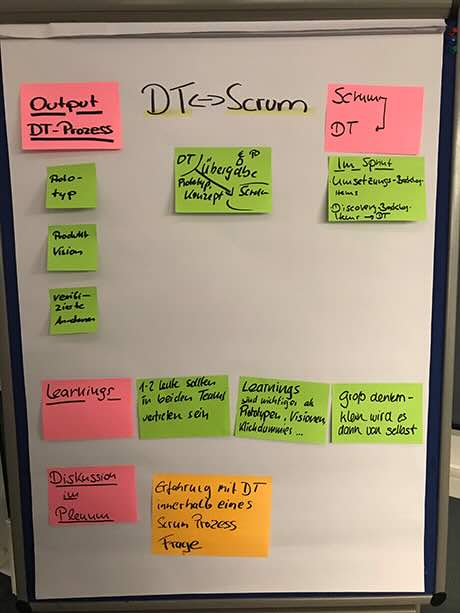
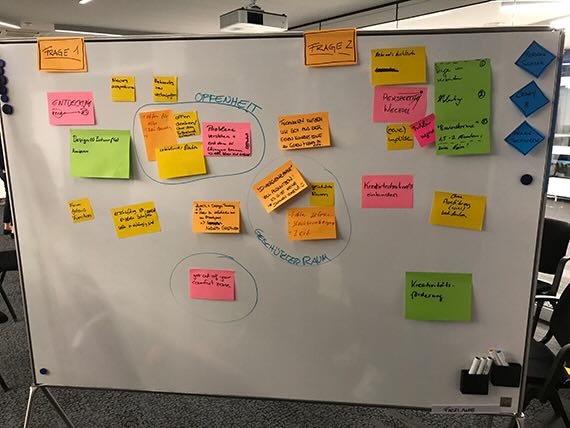
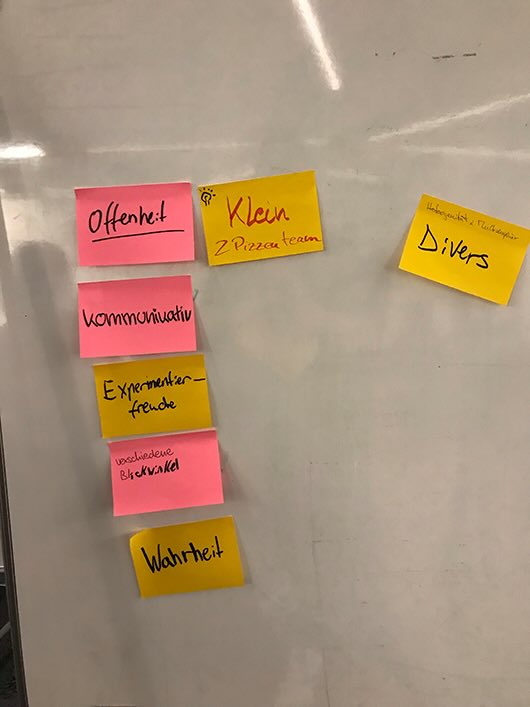
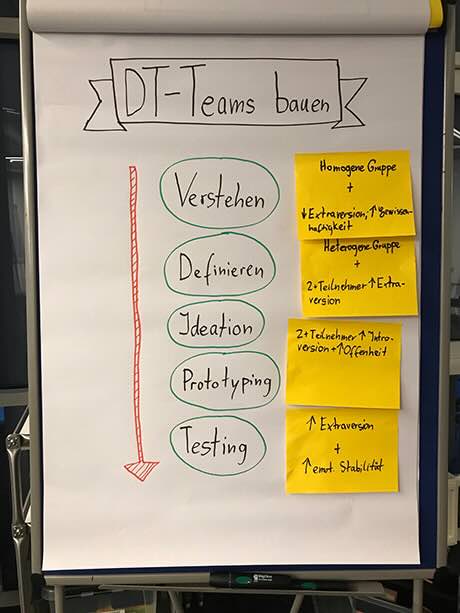
Write a comment